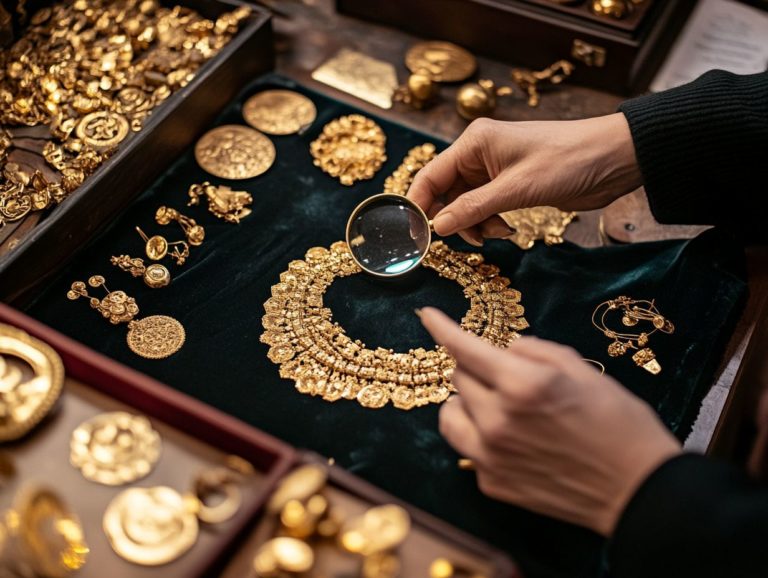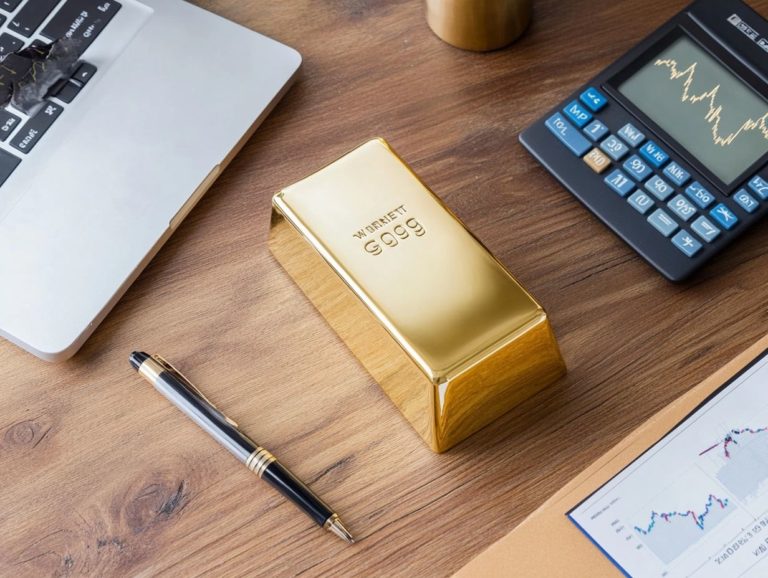5 Trends Shaping Gold Investing in 2024
In recent years, you may have noticed that gold investing has experienced a remarkable transformation, driven by a variety of dynamic factors. As you look ahead to 2024, trends such as the emergence of digital gold, rising demand from emerging markets, and evolving central bank policies are redefining the investment landscape.
Your awareness of the increasing interest in gold-backed cryptocurrencies and the influence of geopolitical tensions is crucial, as these elements play a significant role in shaping the market. This article delves into these five key trends, providing valuable insights into how they will influence the future of gold investing.
Contents
- Key Takeaways:
- 1. Rise of Digital Gold
- 2. Increasing Demand from Emerging Markets
- 3. Shift in Central Bank Policies
- 4. Growing Popularity of Gold-backed Cryptocurrencies
- 5. Impact of Geopolitical Tensions
- How Has Gold Investing Evolved in Recent Years?
- What Are the Main Factors Driving the Shift Towards Digital Gold?
- How Will Emerging Markets Play a Role in the Future of Gold Investing?
- What Changes Can We Expect in Central Bank Policies and How Will They Affect Gold?
- What Are the Advantages and Disadvantages of Gold-backed Cryptocurrencies?
- How Have Geopolitical Tensions Affected Gold Prices in the Past and What Can We Expect in the Future?
- Frequently Asked Questions
- What are the top trends that will redefine gold investing in 2024?
- How will increasing demand from emerging markets impact gold investing in 2024?
- Why is the declining supply of new gold a trend to watch in 2024?
- How might the rise in digital gold investing impact the gold market in 2024?
- What role do sustainable and ethical mining practices play in the future of gold investing?
- How might potential economic and political uncertainties affect gold investing in 2024?
Key Takeaways:
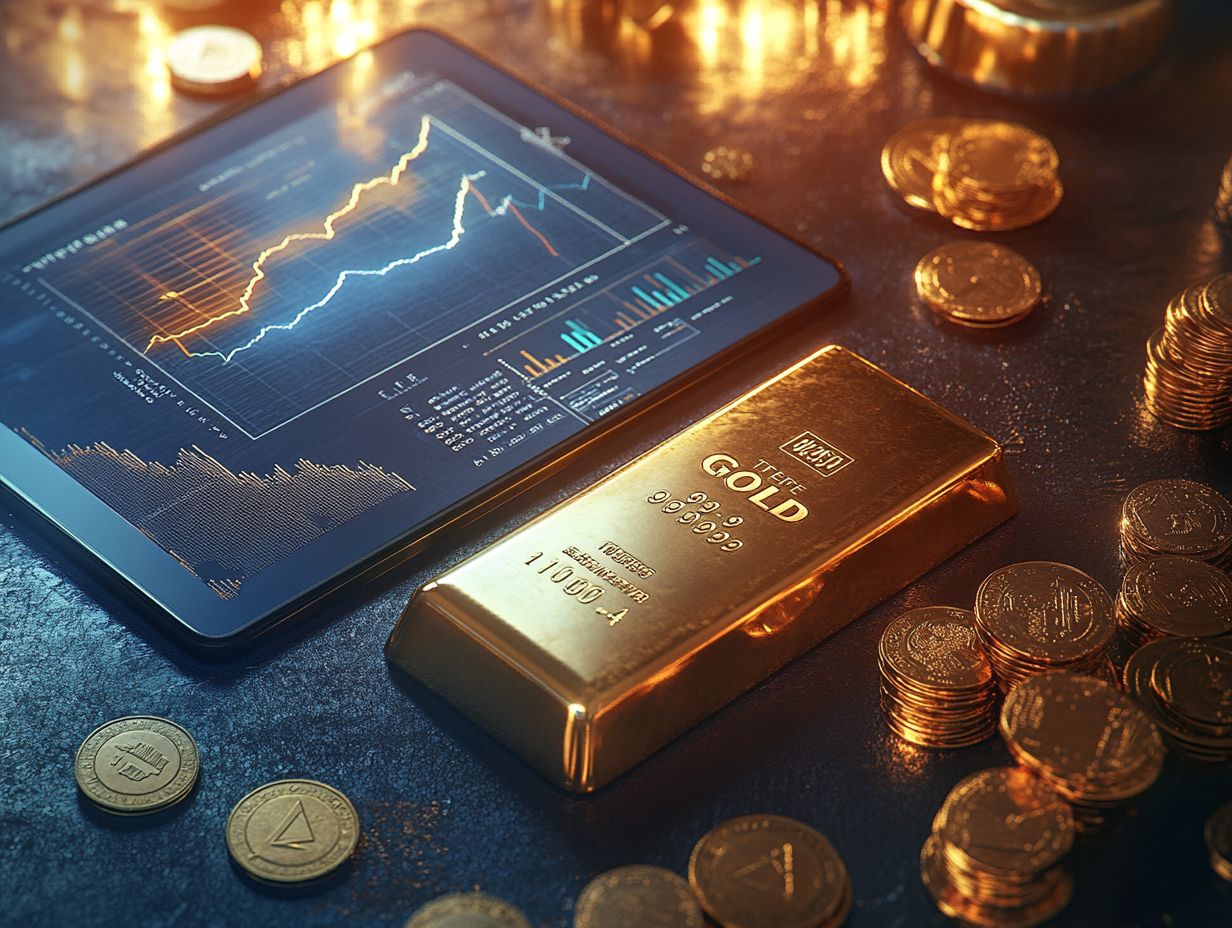
- More investors are choosing digital gold in 2024, making it a convenient option.
- Emerging markets are driving up gold demand and changing global prices.
- Shifting central bank policies could change how much gold is valued and sought after.
1. Rise of Digital Gold
The rise of digital gold signifies a remarkable shift in the investment landscape, as you seek alternatives amid turmoil and rising living costs. This transformation is explained by experts like William Strauss and Neil Howe, who shed light on how history repeats itself during tough times.
Digital gold is changing how you perceive value and security in your portfolio. It stands in contrast to traditional gold investments that have long been considered a safe haven. Its unique features present advantages, positioning it as a strong protection against rising prices, especially when central banks implement loose monetary policies.
This trend is booming! Since the global financial crisis of 2008, there has been heightened interest in alternative assets. As central banks navigate fluctuating market conditions and aim to stabilize economies, the appeal of digital gold continues to expand. This resonates with those who understand the necessity of diversifying their investments as the economic landscape shifts.
2. Increasing Demand from Emerging Markets
As emerging markets grapple with rising inequality and skyrocketing healthcare costs, you will notice a significant surge in the demand for gold. This shift reflects a broader change in global investment strategies, with these economies recognizing gold as an essential asset for protecting against rising prices and preserving wealth.
Countries like India and China are leading the charge, propelled by a cultural affinity for gold and a pressing need to shield themselves from economic ups and downs. The socio-economic factors driving this appetite include high domestic savings rates and a growing middle class that views gold as a reliable investment.
This growing demand is set to shake up the global supply of gold, causing price changes that can impact everyone. Investors in these regions often diversify their portfolios by focusing on gold, anticipating its role as a buffer during times of economic uncertainty. This raises the stakes for precious metals on the global stage.
3. Shift in Central Bank Policies
A remarkable shift in central bank policies is transforming the landscape of gold investment. Institutions are adapting to political upheaval and economic turmoil. The Federal Reserve’s recent interest rate cuts have sparked discussions about a change in money policy aimed at managing inflation and restoring confidence in the financial system.
As central banks globally reassess their monetary policy approaches, many are increasing their gold reserves in response to emerging economic uncertainties. Countries like China and Russia are significantly ramping up their gold purchases, viewing it as a strategic hedge against inflation and currency devaluation. This trend teaches us a crucial lesson from the Great Depression: a similar flight to gold safeguarded wealth for many.
The connection between interest rates and gold prices becomes clear. Historically, when interest rates drop, gold prices often rise as investors seek stability and a safe haven amidst market volatility. The current environment encourages more investors to consider gold, signaling substantial implications for both individual and institutional portfolios.
4. Growing Popularity of Gold-backed Cryptocurrencies
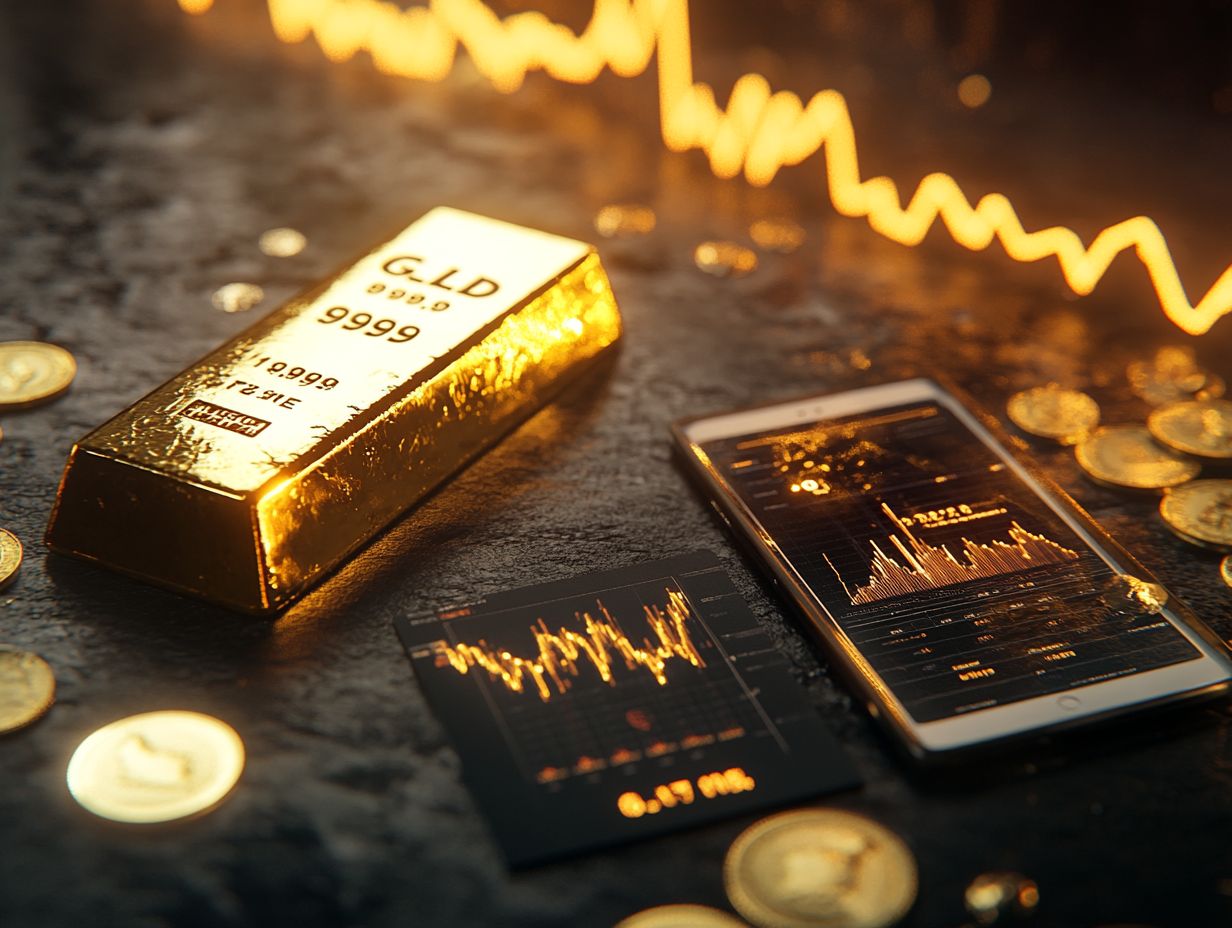
The rising popularity of gold-backed cryptocurrencies stands out as a compelling trend in the realm of digital assets. These offer a unique blend of precious metal stability and the innovative potential of blockchain technology, especially relevant in times of rising inflation and economic uncertainty.
This fusion serves as a modern alternative to traditional gold investing and reflects the evolution of finance in the digital age. These assets come with inherent advantages such as liquidity, ease of transfer, and lower storage costs compared to physical gold, captivating a new generation of investors.
However, it s essential to recognize the important risks, including regulatory risks and market volatility, that can shake their perceived stability. You might discover new ways to invest in gold, like hybrid financial instruments. This trend reflects a broader transformation among individuals seeking effective hedges against inflation in today s unpredictable economic landscape.
5. Impact of Geopolitical Tensions
Geopolitical tensions, particularly illustrated by the ongoing conflict between Russia and Ukraine, significantly influence gold prices. This prompts you to turn to gold as a safe haven amid increasing market volatility and growing distrust in global economic systems.
This scenario isn’t new. Historical events like the American Civil War showcase similar patterns where uncertainty nudged investors toward gold, highlighting a universal longing for stability and security. During that tumultuous time, gold emerged as a refuge from the chaos, much like today s situation, where conflict and instability provoke notable fluctuations in market sentiment.
As geopolitical unrest continues to unfold, the link between historical events and current market behaviors becomes increasingly clear. This ultimately shapes how you, as an investor, perceive gold during times of crisis.
How Has Gold Investing Evolved in Recent Years?
Gold investing has undergone a remarkable transformation in recent years. It has shifted from traditional asset classes into a vibrant investment landscape, driven by inflation concerns, changing market conditions, and strong demand for gold all influenced by economic forecasts and evolving global financial systems.
You might discover new ways to invest in gold, like digital gold and cryptocurrencies, which offer both convenience and liquidity in global markets. These digital assets embody a modern diversification strategy, appealing especially to tech-savvy younger generations who view cryptocurrencies as a fitting complement to traditional precious metals.
Considering geopolitical tensions, like trade disputes and political instability, there’s a renewed interest in gold as a safe haven. Savvy investors are embracing innovative approaches, such as utilizing gold-backed tokens or ETFs (Exchange-Traded Funds), to balance risk and bolster portfolio resilience in these unpredictable times. Additionally, understanding silver market trends can also provide valuable insights for diversifying investments.
What Are the Main Factors Driving the Shift Towards Digital Gold?
Several key factors are propelling you toward the concept of digital gold. Rising concerns about inflation, evolving investment strategies influenced by the Federal Reserve’s monetary policy, and technological advancements that enable secure and transparent transactions are all part of this shift.
As the economic landscape evolves, you ll notice that low interest rates are driving investors like you to explore alternative stores of value. Regulatory frameworks are also catching up with the surge in digital assets, creating a more robust environment for your investments.
Digital gold offers distinct advantages over traditional bullion. It provides liquidity and 24/7 accessibility, which appeals to your tech-savvy inclinations. During economic downturns, it s not just a hedge against volatility; it allows for quick conversion into cash, giving you the power to manage crises effectively.
This evolution marks a fundamental shift in how you preserve and transfer wealth in today s interconnected world.
How Will Emerging Markets Play a Role in the Future of Gold Investing?
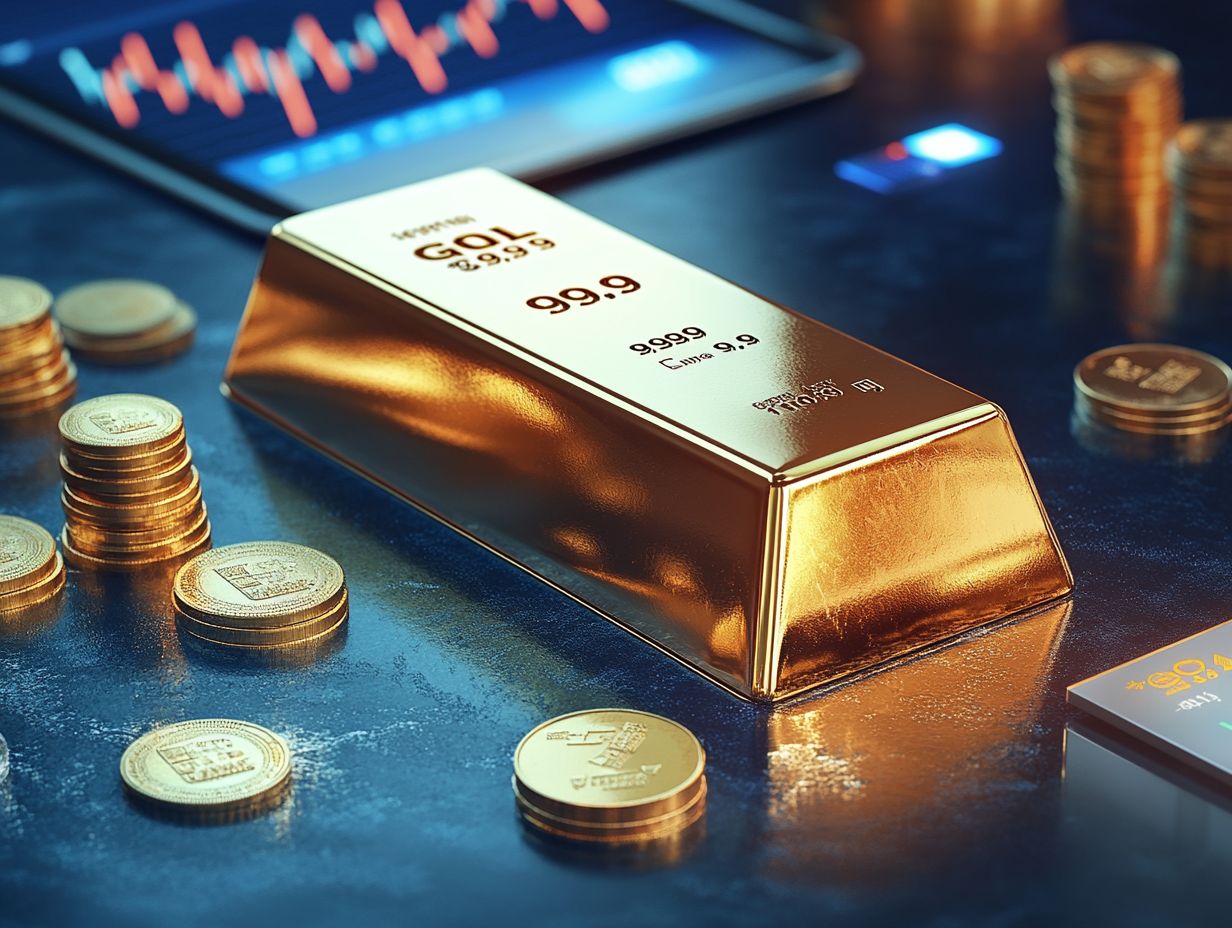
Emerging markets are set to play a crucial role in the future of your gold investing strategy. As economic growth accelerates, rising inequality becomes more pronounced, and the middle class increasingly seeks gold. New opportunities and challenges will arise for you as an investor.
Take India and China, for example. These countries have long been major players in the gold market, driven by cultural significance and a growing desire among their expanding middle classes to preserve wealth.
As urbanization continues in these nations, you can expect a surge in demand for both gold jewelry and investment gold. This trend aligns with the global perspective that views gold as a reliable hedge against currency fluctuations and geopolitical uncertainties. For a deeper insight, consider exploring understanding gold market trends in 2024.
Emerging economies in Southeast Asia, like Vietnam and Indonesia, are also seeing a rise in gold demand, propelled by favorable local economic conditions and increasing savings rates. Therefore, grasping these social and economic factors is essential for you to effectively forecast gold s investment potential in these regions over the next decade.
What Changes Can We Expect in Central Bank Policies and How Will They Affect Gold?
Upcoming changes in central bank policies are poised to redefine your gold investment landscape. Many institutions are contemplating changes in how money is managed, driven by economic forecasts, inflation pressures, and shifting geopolitical factors.
As these institutions evaluate how inflationary trends and workforce dynamics affect growth, they may pivot toward more aggressive strategies, such as interest rate adjustments and asset purchases. This shift could usher in increased market volatility, prompting you to closely monitor any signals from the Federal Reserve and other central banks.
Such changes create an environment where gold often regarded as a safe-haven asset might attract heightened attention. If investor sentiment turns cautious amid these policy adjustments, you could witness the emergence of a bullish trend in gold prices, shaping trading behaviors within the precious metals sector.
What Are the Advantages and Disadvantages of Gold-backed Cryptocurrencies?
Gold-backed cryptocurrencies present you with a distinctive blend of advantages and disadvantages. They offer the stability of gold while navigating the complexities of the cryptocurrency market.
These assets are particularly appealing due to their enhanced liquidity. You can trade them 24/7 on various exchanges, unlike traditional gold that often requires physical handling and transportation. They also act as a hedge against inflation, with the underlying value of gold providing protection against currency devaluation.
However, potential risks are not to be ignored. Regulatory challenges cast a shadow over the crypto landscape, and sudden market volatility can lead to significant price swings.
When you compare these modern assets to traditional gold investments, which typically exhibit more stability, gold-backed cryptocurrencies offer an intriguing twist that captivates a new generation of investors while demanding your careful consideration.
Are you ready to explore the future of gold investing? Stay informed and adapt your strategy today!
How Have Geopolitical Tensions Affected Gold Prices in the Past and What Can We Expect in the Future?
Historically, geopolitical tensions have greatly affected gold prices. Conflicts like the ongoing crisis between Russia and Ukraine illustrate how market dynamics react to uncertainty and instability.
When nations enter military conflicts or confront economic sanctions, investors often flock to gold as a safe haven (a stable investment during uncertain times). This can lead to noticeable fluctuations in its value. For example, during the U.S.-China trade tensions, gold prices surged as uncertainties in global trade prompted market players to seek stability.
Looking ahead, the potential for renewed conflicts in regions like the Middle East or the Korean Peninsula could sway investor behavior once more. Analysts speculate that if such scenarios unfold, gold might rise to prominence again as a crucial asset. This would likely drive prices higher as investors look to hedge against geopolitical risks.
Frequently Asked Questions
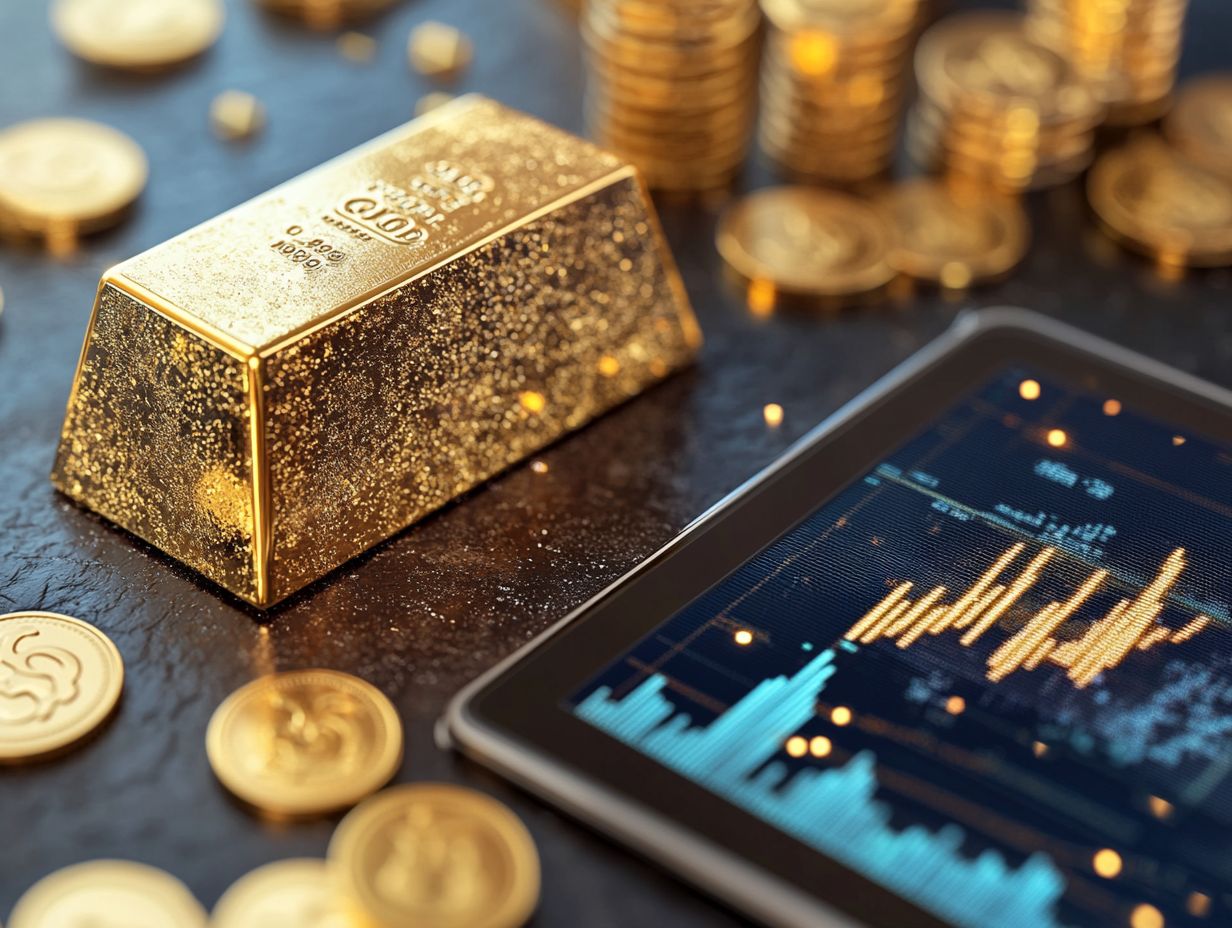
What are the top trends that will redefine gold investing in 2024?
The trends shaping gold investing in 2024 include:
- Increasing demand from emerging markets
- Declining supply of new gold
- Rise in digital gold investing
- Focus on sustainable and ethical mining practices
- Potential economic and political uncertainties
How will increasing demand from emerging markets impact gold investing in 2024?
As emerging markets continue to grow, their demand for gold is expected to increase. This could lead to higher prices and greater investment opportunities for those interested in the gold market.
Why is the declining supply of new gold a trend to watch in 2024?
Experts anticipate that the supply of new gold will decrease in the coming years, with many of the world’s largest gold mines reaching the end of their lifespans. This could lead to a reduced supply and potentially drive up the value of gold.
How might the rise in digital gold investing impact the gold market in 2024?
Digital gold investing, through platforms such as gold-backed exchange-traded funds (ETFs), is becoming increasingly popular. Expect this trend to gain momentum in 2024, potentially making gold more accessible and appealing to a wider range of investors.
What role do sustainable and ethical mining practices play in the future of gold investing?
As consumers become more aware of the environmental and social impacts of mining, there is a growing demand for sustainable and ethical practices. This trend is expected to continue in 2024, with investors actively seeking companies that prioritize responsible mining methods.
How might potential economic and political uncertainties affect gold investing in 2024?
Gold has long been viewed as a safe-haven investment in times of economic or political instability. Thus, any potential uncertainties in the global economy or political landscape could lead to an increase in demand for gold and potentially drive up its value in 2024.
Now is the time to pay attention to these trends!
Don t miss out on the opportunities that lie ahead in 2024! Stay informed about gold investing trends and potential developments.










